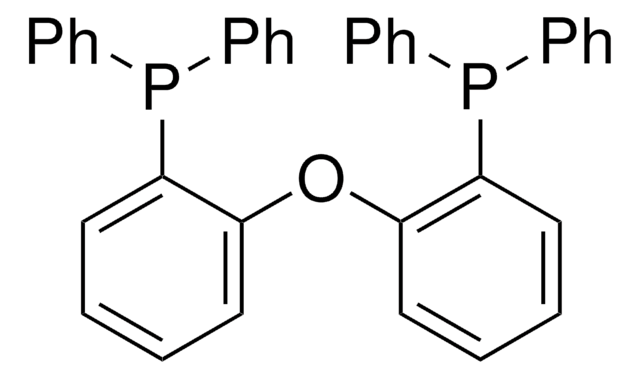212946
Copper(I) chloride
reagent grade, 97%
Synonyme(s) :
Copper monochloride, Cuprous chloride
About This Item
Produits recommandés
Qualité
reagent grade
Pression de vapeur
1.3 mmHg ( 546 °C)
Pureté
97%
Forme
powder
Pertinence de la réaction
reagent type: catalyst
core: copper
pH
5 (20 °C, 50 g/L)
Point d'ébullition
1490 °C (lit.)
Pf
430 °C (lit.)
Solubilité
dimethyl sulfide: partially soluble(lit.)
water: insoluble(lit.)
Chaîne SMILES
Cl[Cu]
InChI
1S/ClH.Cu/h1H;/q;+1/p-1
Clé InChI
OXBLHERUFWYNTN-UHFFFAOYSA-M
Vous recherchez des produits similaires ? Visite Guide de comparaison des produits
Catégories apparentées
Description générale
Application
Mention d'avertissement
Danger
Mentions de danger
Conseils de prudence
Classification des risques
Acute Tox. 4 Dermal - Acute Tox. 4 Oral - Aquatic Acute 1 - Aquatic Chronic 1 - Eye Dam. 1 - Skin Irrit. 2
Code de la classe de stockage
8A - Combustible corrosive hazardous materials
Classe de danger pour l'eau (WGK)
WGK 3
Point d'éclair (°F)
Not applicable
Point d'éclair (°C)
Not applicable
Certificats d'analyse (COA)
Recherchez un Certificats d'analyse (COA) en saisissant le numéro de lot du produit. Les numéros de lot figurent sur l'étiquette du produit après les mots "Lot" ou "Batch".
Déjà en possession de ce produit ?
Retrouvez la documentation relative aux produits que vous avez récemment achetés dans la Bibliothèque de documents.
Les clients ont également consulté
Notre équipe de scientifiques dispose d'une expérience dans tous les secteurs de la recherche, notamment en sciences de la vie, science des matériaux, synthèse chimique, chromatographie, analyse et dans de nombreux autres domaines..
Contacter notre Service technique










